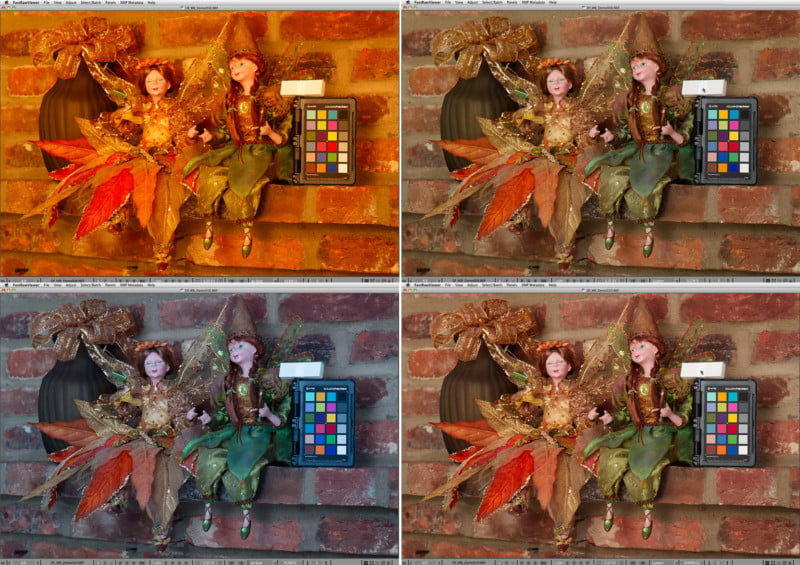
![]()
Want a cheap and easy way to white balance photos without having to buy a color checker or special cards? Here’s a neat hack: you can actually use ordinary white plumber’s tape — the kind you use to seal pipe threads.
LibRaw, the software company behind FastRawViewer, shares that all you’ll need is some Teflon/PTFE white matte plumber’s tape and a white rectangular eraser. Wrap the plumber’s tape around the eraser about 4-5 times and voila! You can place the do-it-yourself white balance reference in any scene and use it as a white point when color correcting your RAW photos.
![]()
There are several advantages to this homemade reference compared to commercial options out there, LibRaw says.
While a gray card may only cost you $10 to $20, that cost can stack up if you ever need several of them at once in the same scene. You can get as much plumber’s tape you’ll need for a few dollars.
You also won’t need to worry about your cards getting dirty or damaged, which could affect their effectiveness. If your DIY white balance reference gets dirty, simply wrap new tape and you’ll be ready to go again.
Finally, a white balance “block” can work better than a white balance card in certain situations in which a card might not stay in place where you need it to be (e.g. outdoors in a windy environment).
LibRaw tested this DIY white balance reference against a color checker and found that results achieved were virtually equivalent to what you get with a $74 X-Rite ColorChecker Passport.

Plumber’s tape works as a white balance reference because of the properties of the polytetrafluoroethylene (PTFE) used.
“Sintered PTFE has been known to have high spectral purity, low opacity (that’s why 4 layers is enough), and a very diffused reflection with close-to-1 factor for many years,” LibRaw states. “However, for obvious reasons, this has not been disseminated as public knowledge.”
LibRaw also tested the custom white balance brick with a spectrophotometer against plumber’s tape, a white balance reference page recommended by X-Rite, a commonly-used gray patch, and a white patch.
![]()
“As you can see, our Teflon tape has a reflectivity factor […] that is the highest of all materials checked, […] a spectral purity equal to 0, and RGB values almost identical to one another […],” LibRaw says. “The graph […] shows that the spectral response of our DIY target is extremely flat.”
So if you’d like a cheap and easy way to add a “pure” white point to your photo shoots, you may want to consider throwing some rolls of plumber’s tape and some erasers in your camera bag.
Image credits: Header photo by Kees08 and licensed under CC BY-SA 4.0. All other photos by LibRaw and used with permission.

